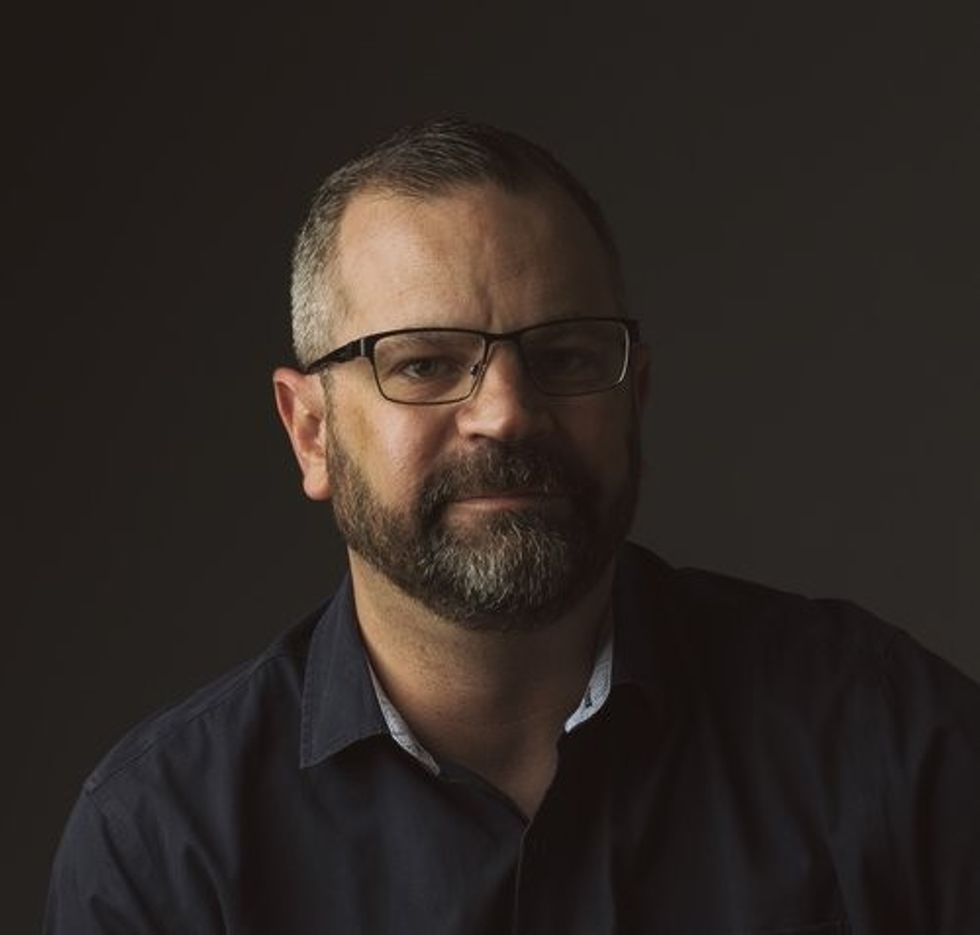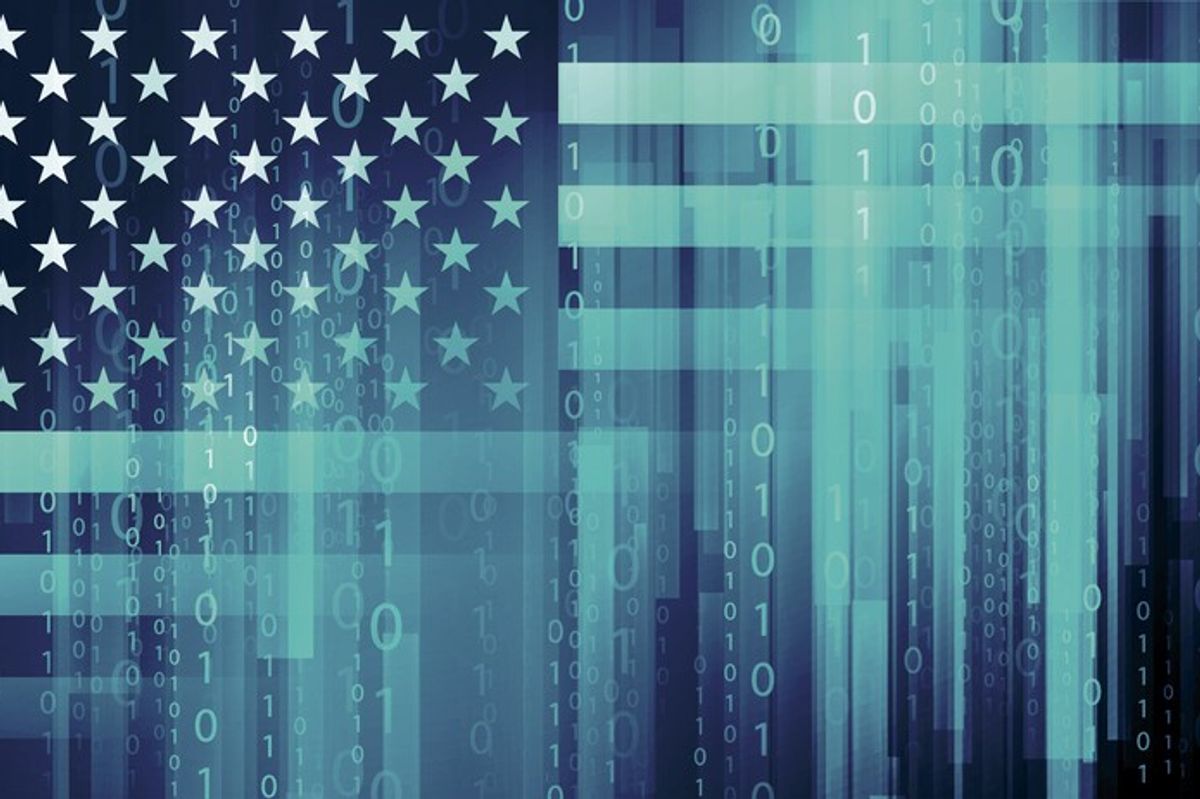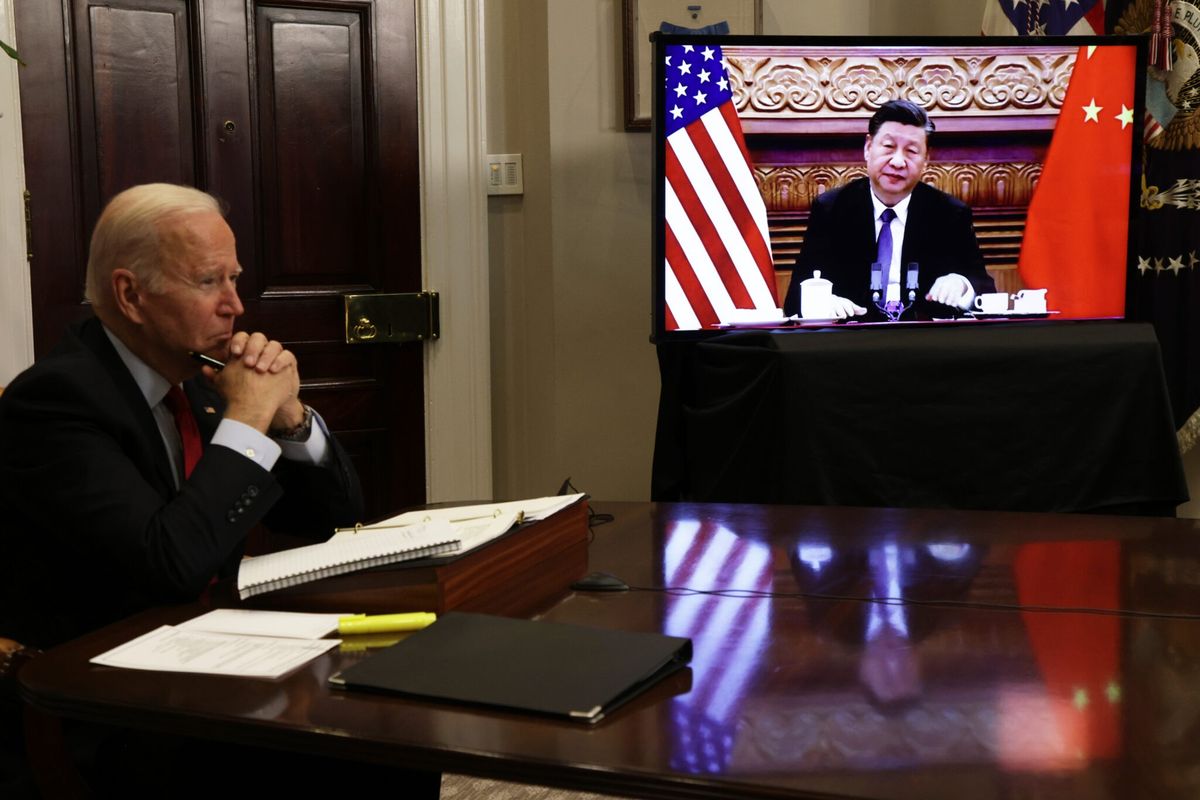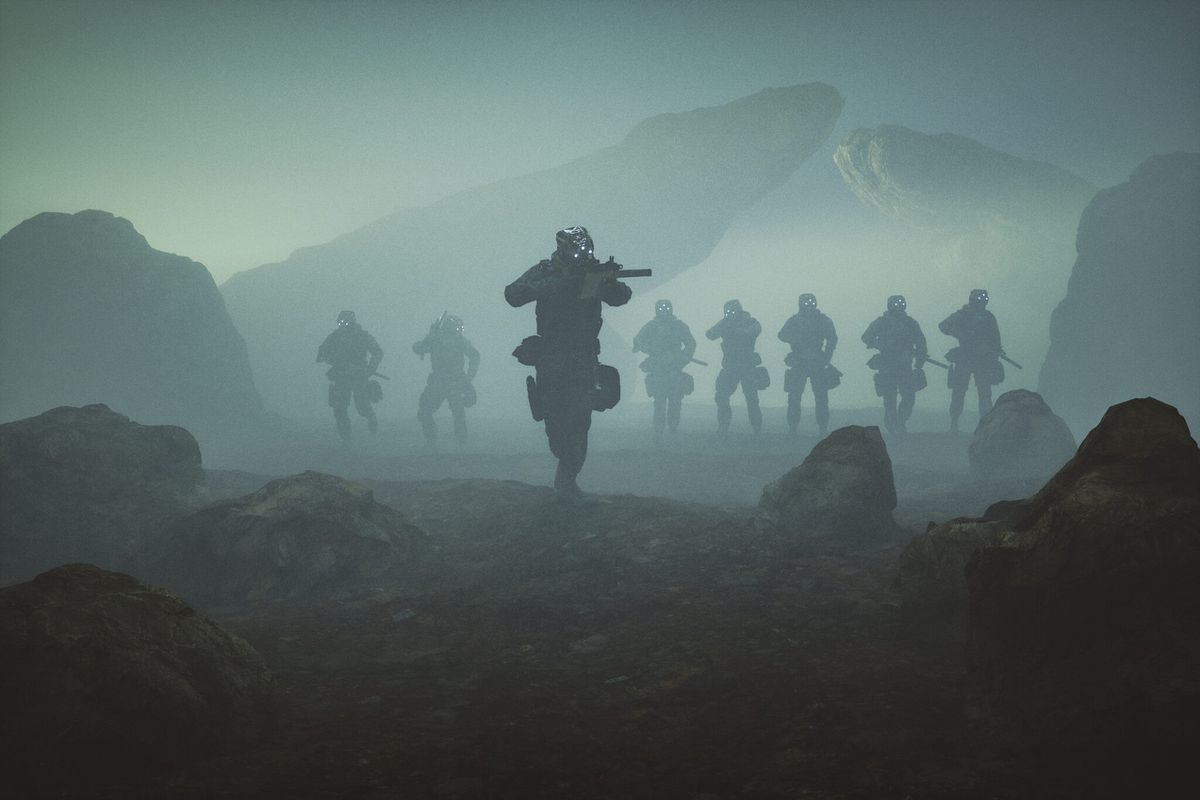EXPERT PERSPECTIVE — The US – Europe Group on Afghanistan, which includes special envoys and representatives for Afghanistan from France, Germany, Italy, Norway, the UK, the US and the EU expressed ‘grave concern’ earlier this month in a communique, about “the continued presence and operations of terrorists and terrorist groups in Afghanistan, including al-Qaeda and other groups with a stated aim to target countries in the region and beyond.”
The leaders specifically pointed to the presence of al-Qaeda leader Ayman al-Zawahiri, who was killed in a drone strike in Kabul on July 31.
National Counterterrorism Center (NCTC) Director Christy Abizaid said last week, that government analysts believe threats to the U.S. homeland by terrorists is “less acute than we’ve seen it” since the attacks of September 11, 2001. But analysts also believe that The Islamic State is rebuilding core capabilities in places like Iraq and Syria.
BACKGROUND:
While The Global Terrorism Index (GTI) published in March, noted a marked drop in incidents of foreign-inspired extremist violence in Western countries in 2021. That fall-off, coupled with the distractions of state-sponsored mayhem Russia, may have created a sense of lull that belies the actual threat terrorism continues to pose, according to some experts.
While the GTI notes that terrorist-related deaths are down in some places, overall extremist violence continues to rise with Islamic extremist operations in Africa posing the most concerning.
According to the report, four of the ten countries with increased terror-related deaths were in sub-Saharan Africa – Niger, Mali, Burkina Faso, and the Democratic Republic of Congo. The GTI concludes that the Sahel region, which encompasses the first three of these countries, has become the “new epicenter of terrorism.”
Then there is the still-unfolding situation in Afghanistan, where chronic instability and active Islamic insurgencies combine to create an environment uniquely favorable to terrorists.
And there is a final wild card – the emergence in many Western countries of political extremists of left and right that may have ambitions beyond symbolic public protests and online musings on the dark web.
THE EXPERTS:
The Cipher Brief tapped terrorism expert Bruce Hoffman; former NYPD Director of Analysis Mitch Silber; Director of Terrorism Studies at Australia's Charles Sturt University Levi West; former FBI counterterrorism expert Jill Sanborn; and former Chief of the Australian Army, Peter Leahy to get a wide-range of expert perspective on today's terrorist threat.
Bruce Hoffman, Terrorism Expert and Professor, Georgetown University
Cipher Brief Expert Bruce Hoffman is a professor at Georgetown University and served as a commissioner on the Independent Commission to Review the FBI’s Post-9/11 Response to Terrorism and Radicalization. He is also a Scholar-in-Residence for Counterterrorism at CIA.
Mitch Silber, Former Director of Analysis, NYPD
Cipher Brief Expert Mitch Silber served as Director of Intelligence Analysis at the New York City Police Department and served as principal advisor to the Deputy Commissioner of Intelligence on counterterrorism policy and analysis. He is now executive director of the Community Security Initiative.
Levi West, Director of Terrorism Studies, Australia's Charles Sturt University
Cipher Brief Expert Levi West is Director of Terrorism Studies at Charles Sturt University and Executive Director of Leviathan Analysis. His research focuses on the strategic logic of terrorism, the intersection of information and communications technology, innovations in terrorist violence and extreme ideologies.
Jill Sanborn, Former Executive Assistant Director, National Security Branch, FBI
Cipher Brief Expert Jill Sanborn retired as the executive assistant director (EAD) of the National Security Branch at the FBI. Sanborn also served as assistant director of the Counterterrorism Division at FBI Headquarters in Washington, D.C. She joined the Phoenix Joint Terrorism Task Force in 2001 and has held primarily counterterrorism assignments since.
Peter Leahy, Former Chief of the Australian Army
Cipher Brief Expert Peter Leahy AC retired as a Lieutenant General after a 37-year career in the Australian Army which included a 6-year appointment as the Chief of the Australian Army. He also served as Deputy Chief of Army. He is a Professor and Director of the National Security Institute at the University of Canberra.
Expert Perspective
The Cipher Brief: What is top of mind for you today when it comes to global trends in terrorism?
Hoffman: The terrorism landscape has hardly become less complex in the past year, which I think is very worrisome. One of the two top-line issues, I would say, is a positive development, which was the killing of Ayman al-Zawahiri last month, but I think the big question right now is who his successor will be. I suspect we'll know on or about September 11th, because that would be the end of the 40-day mourning period. That will have enormous consequences, depending who it is. And it also underscores the problem that membership in the Salafi-Jihadi movement has gone beyond the sort of marquee or key individuals that we associate with it, and has become so entrenched that they have a leadership succession plan, and there's lots of uncertainty when you have a new leader. He could be more effective, he could be less effective.
I think though that what worries me the most is that the coin of the realm in terrorism is violence, and often a way that a new leader demonstrates their suitability to the position they've inherited is by outperforming their predecessor. This has been an historical pattern of terrorism, that both new leaders and successor generations of terrorist groups tend to be even more violent, both as a means of achieving internal group cohesion, but also solidifying that new leader's position.
It's great that we killed al-Zawahiri, but what we always have to understand is that — to paraphrase the famous words of nearly a decade ago of then CENTCOM Commander in Chief General James Mattis — “the enemy always gets a vote. We may say it is over, but it's only over when the enemy says it is.” This is how Genera Mattis accurately described ongoing terrorist threats. And one thing we can say about Al Qaeda is that they have not laid down their arms and said it's over. I would say the opposite. The victory of their close ally, the Taliban, in Afghanistan a year ago has infused the movement with new momentum. Terrorists stick to their own time table, not ours. So, it doesn't mean that we necessarily should have expected or should expect to see anything immediate in terms of a spectacular terrorist attack, but the point is that the Taliban’s victory demonstrated that if you're patient, and persevere long enough, especially because these struggles are divinely ordained, , they are convinced that they will eventually triumph.
Silber: The biggest trend that I have observed over the last few years has been the diminution of the global jihadist threat vs. the West as measured by the number of viable plots vs the West. The continued pressure and removal of top Al Qaeda leadership from the battlefield in both Afghanistan and Syria seems to have limited their capability to project a violent threat to Europe and North America. Similarly, ISIS’s loss of its territorial Caliphate has several impacted its ability to recruit and minimize followers. One year after the US withdrawal from Afghanistan it is unclear if Al Qaeda can really reconstitute a viable terrorist threat from that safe haven.
West: The greatest risk in regard to terrorism is the shifting priorities of government. Counter terrorism, quite rightly, has been subsumed by other issues assessed to be of greater priority. This, however, does not mean the threat of terrorism has diminished, nor has it been defeated. Jihadist terrorism has demonstrated substantial resilience over the past three decades and it remains a substantial threat to national and international security. When this reprioritisation of security threats is combined with a shift in the centre of gravity of jihadism towards Africa, a region of less direct geopolitical interest to the international community, as well as the diversification of terrorist threats at home, there is significant risk that the reallocation of resources away from counter terrorism will result in operational consequences. As the pendulum drifts further and further away from a major terrorist attack, resources diminish, capability decreases, and the risk of a major attack increases.
In addition, the shifting domestic political dynamics of counter terrorism mean that the public appetite for either offshore expeditionary counter terrorism operations, or their willingness to tolerate the impositions of domestic counter terrorism policies, has greatly diminished. This makes it harder for government to assume the political return on investment that has historically been associated with counter terrorism ‘wins,’ or the willingness of the public to simply acquiesce to counter terrorism expenditure and policies.
The withdrawal from Afghanistan is a useful demonstration of these trends. The complete withdrawal of forces, American and allied, from Afghanistan at a time when the jihadist threats that can potentially emanate from that country, and from others, is increasingly multifaceted, and operating in a less hostile environment, should be of substantial concern. Relying on the willingness and capability of the Taliban to ensure that IS-K doesn’t mature into a genuinely transnational threat with external operations intent and capability, is not an ideal basis on which to move forward. The reasons for ending the war in Afghanistan are entirely appreciable and reflect a public that has been ‘at war with terror’ for over two decades. When the need to allocate resources to other security considerations is legitimate, and the political environment becomes less tolerant, it is understandable that the lengthy presence in Afghanistan would end. The risk is that in reprioritising security threats, counter terrorism becomes a secondary capability, increasing the risk of successful transnational attacks. Losing the gains that have been made in counter terrorism capability over the past two decades would be a tragedy in and of itself, it would be even more tragic should that loss of capability result in successful large scale, complex terrorist attacks against Western targets.
Sanborn: I would probably point out two here. Inspired, encouraged and/or enabled lone offenders (like Pensacola) and decentralized networks (all the affiliates) both of which complicate collection and disruption opportunities…. Fewer dots to connect.
Regarding the latter, the global affiliates have independence but they adhere to the group’s (AQ, ISIS) ideology and typically follow Its strategy. While none of the affiliates pose an imminent threat to the U.S., they are determined, resilient, and violent. Some examples:
• On 19 August 2022, al-Shabaab claimed responsibility for the siege of the Hayat Hotel in Mogadishu, Somalia, which killed at least 21 and injured over 100.
• In 2020, the al-Qaeda affiliate al-Shabaab killed three Americans at a U.S. base in Kenya.
• On 15 January 2019, al-Shabaab attacked the DusitD2 Hotel complex in Nairobi, Kenya, using an IED and small-arms fire, killing 21 people, including one U.S. citizen. Many U.S. private sector companies resided in this complex at the time of the attack; many of theiroffices suffered collateral damage.
• In 2019, the U.S. arrested a Kenyan national in the Philippines for trying to stage a 9/11-style attack on the U.S. on behalf of the al-Qaeda affiliate in East Africa, al-Shabaab.
With regard to lone offenders who are "Inspired/encouraged/enabled," in 2019, the al-Qaeda affiliate in Yemen — al-Qaeda in the Arabian Peninsula — communicated with the Saudi Arabia Air Force officer in Pensacola, Florida who killed three sailors and wounded eight others at Naval Air Station Pensacola.
While AQ or even affiliate AQAP did not direct this plot, his communication showed they supported, inspired and maybe even encouragement/enabled. All terror organizations needs is willing individuals to offer themselves to commit and attack I alignment with their ideologies.
Leahy: Top of mind: a broad range of terror groups are maintaining their momentum in Africa and the Indian Sub-Continent. These are largely unobserved in the West and are making us complacent about the threat.
We have lost visibility of what is happening in Afghanistan and the Taliban must be encouraged by their victory. Afghanistan may become a base of operations again. Violent extremists may again travel to Afghanistan for training and experience. The Afghanistan experience may embolden other extremist groups for example in the Southern Philippines.
The Cipher Brief: In view of the distractions of Ukraine, China and Iran, how would you see the United States and its allies positioning themselves to deal with multiple threats while not becoming more vulnerable to terrorist attack?
Hoffman: I just see everyone, everywhere wanting to put terrorism in the rear-view mirror. I think that was really underscored early last month, when there was a report in The New York Times of a United States intelligence community assessment that basically said Al-Qaeda had ceased to exist and was no longer a threat. And that to me was emblematic of this wishful thinking…that this assessment claimed that there were only a dozen Al-Qaeda senior leaders still alive. It perplexes me where they got that number from because just last year the Taliban freed at least three dozen Al-Qaeda senior operatives, many of whom had been in prison for a decade and a half, from the two major terrorist prisons in Afghanistan.
As I was quoted in that article, I would be very surprised if having spent a decade and a half in Afghan prisons, if those people emerged and decided to go into accounting or become pomegranate farmers.
We also see how, for instance, two of the key Taliban operatives that were freed as part of the deal that led to the release of the U.S. soldier Bowe Bergdahl in 2014 have gone to occupy very senior and consequential positions in the Taliban hierarchy. Abdul Haq Wasiq is the Director of Intelligence and Khairullah Khairkhwa is the Minister of Information and Culture. They were two of the five Talibian that were released as part of that deal.
So the threat hasn't receded. Indeed, when Ayman al-Zawahri was killed so were Sirajuddin Haqqani's son and son-in-law. Sirajuddin Haqqani is at the vortex of Afghan security and intelligence now as the Minister of the Interior and his uncle, Khalil-ur-Rahman Haqqani, is the Minister of Refugees.
So we want to see terrorism, at least international terrorism, as a threat that we've countered and resolved, that we can manage on over-the-horizon basis. And also, rightly so, revel in the killing of the elimination of the founder and second leader of Al-Qaeda, which was absolutely a key success. There's absolutely no doubt, but the point is they haven't given up.
West: This is a fundamental challenge to Western democracies. The balance required to manage state-based threats and the continuing threat of transnational terrorism is significant. Where there are efficiencies to be found is in the capability development that has been undertaken over the past two decades of counter terrorism prioritisation. Western countries have built two highly refined, precise, and deadly interrelated capabilities that potentially have applicability in responding to the current and future threat environment regarding Russia, China, and Iran.
In the first instance, Western democracies have built a targeting apparatus that is as effective as it is lethal. The integration of the various components of government, frequently in a multi-lateral or allied context, to “find, fix, and finish” high value targets, may prove equally useful in certain alternative contexts, if only in the analytical context. Identifying high value targets and undertaking a variety of actions against them is likely to remain a key security capability, and one that is transferrable across threat environments. Given the desire to avoid conventional conflict between nuclear powers, or those that exist at the threshold, the use of high value targeting and the deployment of a wide array of unconventional capabilities against them is a key requirement in balancing the capacity to respond across domains.
Secondly, and as an extension of the aforementioned, the building of highly proficient, and now highly experienced, special operations capability across Western countries, enables the HVT capabilities identified above, and the potential unconventional capabilities (especially beyond the strictly kinetic) that may be of utility in avoiding conventional conflict, to be exercised with a degree of continuity. While it is highly likely that SOFs will cease the high tempo counter terrorism and counter insurgency operations of the past decade, it is likely that the demand for a range of SOF capabilities will continue, diversify, and more than likely increase. Because of the centrality of SOF to the past two decades of conflict, most Western jurisdictions have built the necessary supporting infrastructures for ensuring ongoing utilisation of SOF. There is a capability overlap between the past two decades of CT centric SOF deployment, and the kind of warfare that will be necessary in avoiding conventional conflict and the catastrophic escalation that risks.
Sanborn: We do not focus on multiple things well. And I think you're seeing a result of that with China and Russia, because we focused so heavily on terrorism for 20 years. I think somehow we have to figure out a way, especially in the national security space, to focus on multiple things at one time. For example; we're always using national security resources only to cover national security issues instead of maybe trying to realign non-national security resources into national security. I think those are just tough resource questions that I don't envy any department head that has to make those. We don't have the luxury we had in the first couple years after 9/11 to hyperfocus on one. We're going to have to figure out a way to focus on multiple.
We can't cover national security threats without partnerships. Right after 9/11, partnerships were all about law enforcement partnerships. Now we see partnerships growing even outside, especially in counterintelligence. We have partnerships with academia, partnerships with the private sector. I think that the only way we can smartly cover all the threats that are ahead of us is using those partnerships as a force multiplier.
I think the success of the FBI’s Joint Terrorism Task Forces (JTTF) shows you that that concept works. One of the things people probably aren't familiar with is five years ago the FBI created a similar concept with national counterintelligence task forces. So now every one of the 56 field offices have not just the JTTF’s, they also have a counterintelligence task forces. State and local partners are participating, just like they did in the terrorism task forces with us, now in the counterintelligence task forces.
Those are some of the ways I think we can be force multipliers. And I think we have to always continue to look how we can leverage partnerships to help us get ahead of all the different threats rising at the same time.
Leahy: We must be able to do both at short notice so it will be necessary to maintain CT forces, but as is developing they will be held as a reaction force rather than an occupying force. There will be a need for greater intelligence capabilities and QRF capabilities. This must include language training and cultural awareness capabilities. Remote strike capabilities will be essential. Drones will have a vital role to play but must be advised by local intelligence and cooperative arrangements.
The Cipher Brief: Some recent media reports are warning of the technological threat that could grow as groups like al-Shabaab, the Taliban, Al Qaeda or ISIS become more adept at employing digital technology or biotechnology, and incorporating these tactics and means in their attacks. Do you see that rise in technical sophistication?
Hoffman: Yes, but perhaps this is the only good news in this interview in the sense of not as precipitously leaning towards bio and other highly consequential and unconventional types of attacks. There's a long history of battlefield technologies migrating from war zones into terrorist hands that are then applied in civilian urban environments. And what concerns me greatly is future terrorist use of drones, especially everything that we read about Ukraine, how drones on both sides, armed drones, surveillance, drones, but especially some with quite serious ordinance capabilities, have become a critical weapon.
I don't think it's outside the realm of science fiction or thriller novels to think of swarming attacks using drones. And I'm not talking about hundreds or thousands, but just being able to sustain urban attacks with even modest loss of life or destruction using drones would perfectly suit the terrorists’ perennial goals of sowing fear and anxiety, and presenting governments with threats and challenges that they may not be able to immediately and effectively counter.
So in other words, the payoff for them wouldn't have to be as you've described, and I don't think we can exclude digital technologies that have widespread impact or the use of bio weapons, especially coming off of the global pandemic, where we see how public health concerns become such a major security issue in a short period of time.
But I would say just within reach, there's new technologies that are being developed, that in the hands of terrorists, I'm not saying they'll be game-changers, but would fit very well into their stock and trade of creating fear and anxiety, and also undermining confidence in elected officials and in governments to provide very quick security solutions.
Silber: Of the groups that you mentioned, ISIS was a pioneer in utilizing drone technology in order to weaponize it, even if crudely —as well as working on chemical weapons.. I would imagine that there are cadres in all of these groups working to develop next generation capabilities in cyber and other areas.
West: Terrorist organisations are excellent early adopters of technology, primarily in relation to technologies of violence. They frequently develop innovative ways in which to deploy violence as a requirement of their need to attract media attention. This doesn’t necessarily require the adoption of sophisticated emerging capability such as biotechnology, but can be the innovative integration of digital technology like a GoPro and readily available video editing software, the exploitation of social media, and a well-choreographed video. Terrorist organisations have a tendency to be relatively conservative in their operational capability. Since the first uses of dynamite by anarchist terrorists in the late 1800s, the use of incendiary devices has been a consistent mainstay of their tactical choices. They have been deployed in a variety of innovative ways, but detonating an explosive device has remained, and will likely remain, the default tactical option of terrorist groups, regardless of ideological motivation.
The one area of technology that I remain surprised and confused by the absence of substantial adoption by terrorists is drones. While the Syrian conflict saw some use, and Hezbollah has had capability for some time, it has not seen the kind of broader adoption I expected. Drones offer enormous opportunity to terrorist organisations, and it is unclear as to why, as a delivery system for explosives, or as a harassment and disruption tool in Western jurisdictions, they haven’t become much more prevalent. They are readily available, affordable, and relatively simple to master. While they have been incorporated into the propaganda production capabilities of, in particular, IS, we haven’t, thankfully, seen the full-scale incorporation of them into the suite of offensive of tools that terrorists advocate and deploy.
Where there is some certainty is in relation to communications technology. Terrorist organisations have always exploited emergent information and communications technologies and will continue to do so. In the same way that anarchists relied on printing technologies of the late 19th century, IS relied on early 21st century social media platforms. Whenever the next phase shift in communications technology takes place, it is a near certainty that terrorist organisation will seek to exploit it. The adaptation from easily accessible and highly effective platforms such as Twitter and Facebook to more esoteric platforms such as Telegram is reflective of the adaptability of terrorists in this space, but it is when genuinely transformative change in these technologies takes place that terrorists have traditionally found novel exploitation opportunities.
Sanborn: We've seen terrorists try to be creative in a variety of ways. They range from the threats to air travel in the printer cartridge plot in 2010 by Al-Qaeda in the Arabian Peninsula (AQAP), to the 2017 ISIS bomb disguised as a meat grinder; we’ve seen them try to do different things. I think our adversaries are always looking for ways to attack us that would be undetected by our current screening procedures and processes. I think a lot of entities hypothesize about that, and actually work to try to be ahead of that.
The Weapons of Mass Destruction Directorate, for example, inside the FBI, is constantly trying to think about how an adversary could use different biological-chemical warfare against us, and collect intelligence to help us understand that.
For a long time, people thought that the Weapons of Mass Destruction Directorate didn't serve as big of a purpose as maybe the resources it requires. I think we have to have entities like that to constantly be thinking about the what-ifs, or we'll get caught off guard.
We haven't seen as much by way of digital or cyberattacks driven by the terror organizations, but that could just be a blind spot and not necessarily that they're not looking. You could launch some sort of cyberattack against Hoover Dam, for example, that could cripple us by just taking that down or opening the dam. I think anything that a hacker could potentially do online is something that I wouldn't put it beside our adversaries, from a terrorism standpoint, to think about.
In this regard, CISA does a great job. When you think about online threats, I don't think it's if an entity's going to get hacked; I think it's when. And I think the best we can do is try to figure out how to detect that quickly and minimize the impact. For a hacker getting in the front door is one thing. But getting in the front door and every other door inside is a problem. I think that's the value of layered defenses, which we are slowly improving at as a nation.
Leahy: Yes, very much so. Proliferation of nuclear weapons means that there will be more to steal.
I am surprised that we haven’t already seen more attempts at chemical and biological attacks. We know that al Qaeda in the early days had aspirations for these attacks. They must have had people at school learning these techniques.
The Cipher Brief: A worrying trend is the rise of home-grown extremism which could start translating into heightened threats of domestic terrorism. How serious is this rise in domestic extremism, and how should the U.S. and similar democracies deal with it?
Hoffman: A good example of where we are today is actually from four years ago. And it was the last iteration of the U.S. National Counter-terrorism Strategy, which was released in October, 2018 by the Trump Administration. It was the fourth iteration of the national strategies. Each one — the first one was in 2004 — identified and focused on one terrorist enemy only — al-Qaeda.
But the changes in the latest one, to my mind, were absolutely profound. This was the first national strategy that included ISIS. I would say ISIS is a shadow of its former self, but it hasn't gone away completely. Obviously it's much like Al-Qaeda. Its two key leaders have been killed, and in even a shorter period of time, but it hasn't disappeared completely.
So the 2018, the fourth national strategy, the latest iteration, which is still operative, included ISIS as well. And that was bad enough news, but it's fascinating to note how it broadened to also embrace and presciently identified the threat from both far-right and far-left extremism. Again, it was released in 2018, but you can be sure that it had been worked on for the previous year and a half.
It also talked about single issue terrorism motivated by the environment, for example, and climate change. Or by highly divisive issues like legalized abortion, which obviously is now changed with the recent Supreme Court decision. So, even four years ago, in terms of the counter-terrorism landscape, the National Security Council was in front of anticipating unfortunately this proliferation of threats.
And the challenge is that at a time of diminishing attention on terrorism writ large, especially international terrorism, at a time of also decreased resources and personnel focused on the international terrorism problem, we're confronted by the domestic terrorism one, which siphons off even more resources, but of course is hugely compelling, and can't be ignored.
So we're just in such an unenviable position in terms of the terrorist threat, because 20 years ago, the terrorist threat was very clearly foreign, not domestic. And now it is both. And that's not diminishing either, especially given the divisions in and political and social polarization that has occurred in our country.
All that means that we're asking the intelligence community and law enforcement to do more with less, or to do more at a time of proliferating threats and proliferating preoccupations from non-terrorist threats along with terrorist ones.
Silber: Currently the greatest terrorism threat to the U.S. is a panoply of homegrown domestic violent extremist groups of varying ideological typologies. Unlike foreign terrorist groups, because these groups are primarily domestic, they fall under a different legal architecture that is not as permissive for law enforcement as it would be if the groups were designated as FTO’s. This situation has the effect of creating higher investigative thresholds for law enforcement and is a challenge to preventing domestic terrorism at home.
West: The resurgence of the extreme right presents a clear and present danger to liberal democracies worldwide. This is manifesting in two distinct but interconnected ways. The first, is in the dramatic escalation of extreme right-wing terrorism. Increasingly, Western jurisdictions are countering threats that are overwhelmingly emanating from individuals motivated by various manifestations of extreme right-wing ideology. In the Australian context, the domestic intelligence service has publicly reported that something akin to 50% of their high priority on-shore counter terrorism workload is right-wing extremism. The FBI continues what is acknowledged as its largest ever investigation, associated with the January 6 insurrection, and again, focused on individuals predominantly associated with extreme right-wing groups. In the UK, 2021 statistics indicate that nearly 50% of their Prevent referrals were for extreme right-wing cases.
The complicating factor in relation to right-wing extremism and terrorism is that the politics, grievances, and issues that animate it, are part of the broad spectrum of political discourse in Western democracies, with an increasingly normalised body of political discourse that is animated by themes that share space with extremist rhetoric, in particular regarding immigration and Islam. Platforming, and advocating for, variations of, or explicitly for, conspiracy theories such as The Great Replacement, or dog-whistling to QAnon narratives is deeply problematic for the health of pluralistic, liberal democracies.
The intentional positioning of individuals within various advisory or elected positions, as well as the practice of entryism – the covert infiltration of political parties or other civil society organisations by right-wing extremists, represents the complicating factor for Western democracy in relation to the extreme right. There is a potential voting constituency that at best can encourage the absence of condemnation, and at worst can involve the active encouragement of right-wing extremists. The threat of ‘semi-fascism’ is not limited to the United States, and terrorism by right-wing extremists is a component of how this issue manifests.
Sanborn: I think it's really important to distinguish between Homegrown Violent Extremists (HVE), who are individuals primarily based in the United States motivated and inspired by foreign terrorist organization ideology, and Domestic Violent Extremists (DVE), who are U.S.-based individuals inspired by domestic ideologies like, "I'm against the United States government," or, "I believe in the white race is superior to the Black race. Therefore, I'm going to conduct a violent act because of it." It's really important to separate them because the tools, and how we combat them, are different.
For example, the U.S. intel community can and does help us combat the HVE threat. It's a little stickier, and they don't have as much authority or leeway to help the FBI go after the domestic violence extremist threat because of U.S. person privacy issues. So the tools are a bit different.
When you hear the Director of the FBI testify, he basically says, "The number one terrorism threat to the United States is lone offenders." And lone offenders come in both walks of life — they come in the HVE type that are motivated and inspired by foreign terrorist ideologies. They also come in the domestic type that are inspired by domestic ideologies. Sometimes I think people misunderstand what he's saying: that he's saying the domestic problem is greater than the foreign terrorist organization problem.
And the reason he's saying the lone offender is so difficult is we need indicators and warnings. We need dots to chase after. When you have a lone offender just sitting in their house, coming up with their plan and purchasing their materials, it's really hard for anybody in law enforcement, in the intel community, to see any dots. There are no warning signs.
There's a lot of conversation out there about a domestic terrorism statute. I don't know that a statute would, by itself, necessarily be a game-changing event for us. I think that there is something potentially there to be refined, and giving a little bit more specific guidance on how you go about the domestic problem. One of the things I think is really important isnuance — not every hate crime, or hateful violent act, is a domestic violent extremist. I think that's really important to meet the definition of domestic terrorism. It has to be done to intimidate, coerce, get the government to do something because of your act.
I don't have a specific solution — "Hey, if we had this, this would fix everything." But I think it's important for people to understand that defining and delineating what is a hate crime, and what is potentially a domestic terrorism type event is definitely challenging.
I also think that you'll hear the director, when he testifies, also say this: defending an individual's right in the United States to have a belief, and coalesce around their belief, is as important as keeping the American people safe. Our mission to protect the Constitution is equal to our mission to protect the American people.
And that's what makes a domestic threat really hard: is there is a fine line between peaceful, lawful expression of your belief, then what crosses the line into a violent act that is unacceptable. It's a real challenge for law enforcement to try to pay attention to that line and protect your right, but also keep people safe.
Leahy: Official documents state that the most likely terrorist attack scenario in Australia over the next 12 months continues to be a lone-actor attack. “Of particular concern in Australia is the number of minors being radicalized. This is getting higher and the age of the minors being radicalised is getting lower.”
“A few years ago, minors represented around two to three per cent of our new counter-terrorism investigations. In the last year, though, the figure’s been closer to fifteen per cent. And perhaps more disturbingly, these young people are more intense in their extremism.”
“Where once minors tended to be on the fringe of extremist groups, we are now seeing teenagers in leadership positions, directing adults, and willing to take violent action themselves.”
Australian Government officials have assessed that “espionage and foreign interference has supplanted terrorism as our principal security concern. ” There has also been an increase in foreign interference.
As well as espionage, we’ve also seen an increase in foreign interference.Australia is experiencing an increase in the threat from right wing terrorism – ultra-nationalism and racism. There is a Parliamentary review scoping the size of the problem and ASIO is devoting more resources to the issue.
Report by: Cipher Brief Senior Editor Ken Hughes
Read more expert-driven national security insights, perspective and analysis in The Cipher Brief


















